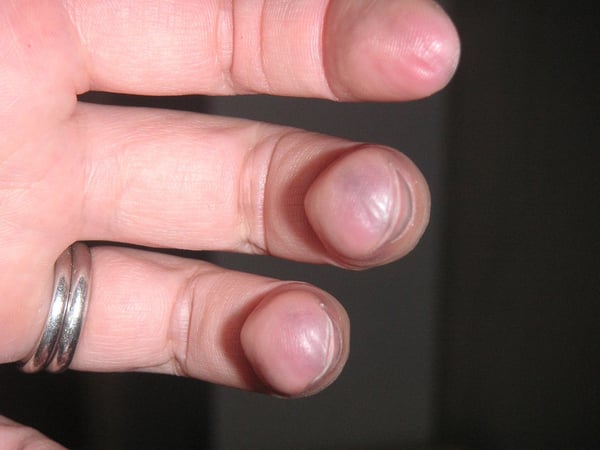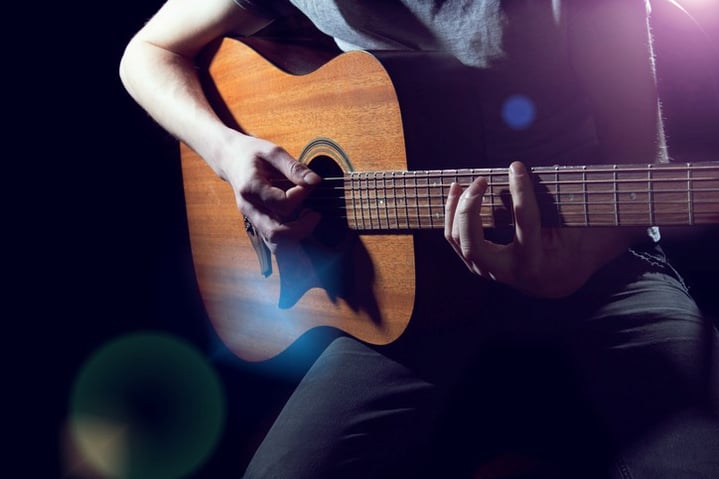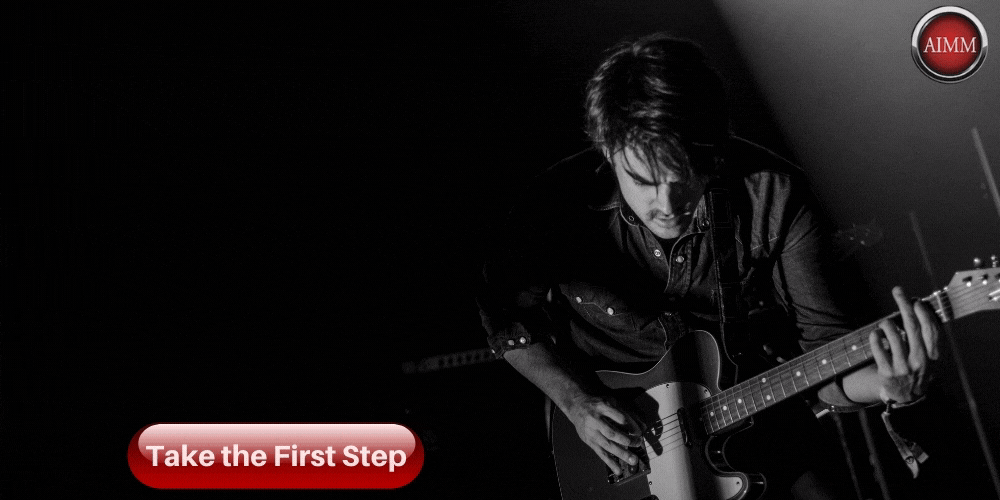Toughen Up Your Guitar Playing Hand
Whether you look up sheet music or TABS, the first part of any song that you learn to play is memorable.
You finally nail those chord progressions or that riff, and you raise your hands in celebration. But then you notice your fingertips are sore.
For the beginner guitar player, sore fingertips are common and show progression. Don't be discouraged. Stay persistent.
The way experienced guitar players can shred through those insane solos is by developing calluses on their fingers.
So what exactly is a callus and how do you develop them?
Table Of Contents
- What Is A Callus?
- How To Develop Calluses
- Cautions to Take While Developing Calluses
- The Resulting Payoff
What is a callus?
According to Merriam-Webster, a callus is "a thickening of or a hard thickened area on the skin."
For example, think of a bodybuilder or someone who excessively exercises. The more often the individual uses a dumbbell, the pressure and contact constantly forced on the palm will lead to skin that is significantly coarser.
The same works for guitar players.
It may not be something that naturally pops in your head when you consider playing guitar, but for the extent of whatever you are performing at minimum one finger will constantly be applying pressure to a thin wire that is the string.
Even though with your constant hand movement the string isn't likely to consistently hit the same spot of your fingertip, after a decent amount of time you will likely experience a soreness.
With such a negative connotation, it is ironic that the goal of a guitar player is to attain fingertip calluses to ease guitar playing.
Let's break down various ways you can speed up the process of developing calluses.
How to Develop Calluses
The idea of trying to form calluses may seem a little masochistic, so think of it a different way.
Consider developing a callus the same as ripping the band-aid off quickly. In the long run, it will undoubtedly benefit your guitar playing and allow you to play for longer durations.

A few ways you can form fingertip calluses to assist in guitar playing include:
1. Practice Practice Practice
A little self-explanatory, but it is sound advice. The best way to get calluses fit for guitar strings is by playing on guitar strings. You can do extensive research, but just like you can't learn to ride a bike without actually riding a bike, the same can be said for guitar calluses.
Important note: You don't want to overdo it here. Causing yourself so much irritation that it deters you from playing the guitar isn't a smart goal. Always stop if pain becomes too much and next time you practice, cut back on time by 5 or so minutes.
This way is the most practical as well, considering while you are developing the calluses you are simultaneously working on your guitar skill and inevitably learning something new.
2. Practice Something You Actually Enjoy
This goes hand in hand with step one, but it is important to have fun while playing guitar. Now, it is important to know scales, especially if you have a guitar playing style that relies heavily on scales such as blues.
However, you will be less likely to push through fingertip irritation if you are learning something dull rather than that song you heard on the radio that made you pick up a guitar in the first place.
Like most things in life, there is a time for seriousness and a time for play. If you find yourself struggling to desire to continue because of pain, maybe you need to help the positives outweigh the negative.
A quick Google search or sites like Ultimate Guitar will help you find TABS to your favorite song that will likely encourage you to push through the development stage of a callus.
3. Unplug the Electric Guitar and Dust Off the Acoustic Guitar
The callus, as mentioned above, is caused by consistently indenting the string against your fingertip.
So considering acoustic guitars naturally have thicker strings than an electric guitar, playing an acoustic will help you achieve those calluses a little faster.
Also, if your musical style lends itself more to the electric guitar, you can spend your time developing calluses and practicing on acoustic, and then perform on electric. You will be amazed at how comfortable the electric guitar strings feel in comparison.
Hidden benefit: Due to the size of the guitar neck, action of the strings, and thickness of the strings, acoustic guitars are technically harder to play than electric guitars. So if you learn a song on acoustic and then transfer it to electric guitar, it will be way easier.
Cautions to Take While Developing Calluses
Obviously, when dealing with calluses, this isn't a life or death situation. However, it is important for your longevity and comfort to take certain precautions going into forming calluses.
These precautions include:
- Again, don't overdo it too much at the beginning. Just like over-exercising, you want to allow your fingertips time to heal. Stay persistent but don't go crazy. Create a regular practice schedule that works for you.
- Do not play immediately after your hands have been submerged in water. Your fingertips will be significantly soft and consequently playing guitar can actually shave off and remove the existing callus
- Don't pick at your callus. This can be tempting once your skin becomes soft from water or if you use moisturizer, but it will set your progress back days.
- Don't stress about pressing too hard on the strings. While it is important to apply a good amount of pressure, you don't have to slam down on the strings. Find a good balance where you're not pressing too firmly, but you aren't receiving a "buzzing" sound.
The Resulting Pay-Off

If you stay persistent and keep practicing, within ten days or so you will notice the sharpness of the pain begin to disappear.
Once this occurs you will notice playing the guitar will become much easier and enjoyable. The idea of "needing" or "forming" calluses will fade from your conscious thought regarding guitar. You'll just pick it up and start jamming away.
If are an intermediate guitar player, have a solid handle on your own calluses, and want to pursue an education in guitar and push your skills to new heights, check out the Atlanta Institute of Music and Media and their guitar program.
Attending a music college is great way to break into the music industry, and hey, maybe one day you'll even make the list of greatest guitar players of all time.
For more information on how AIMM can benefit your guitar career, don't hesitate to click the button below.
















